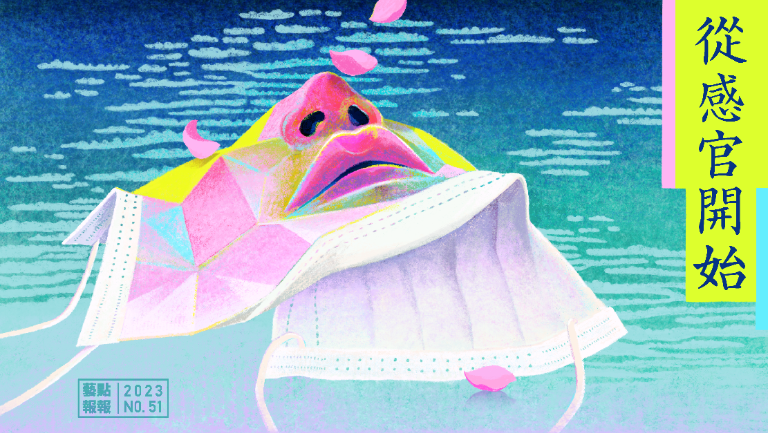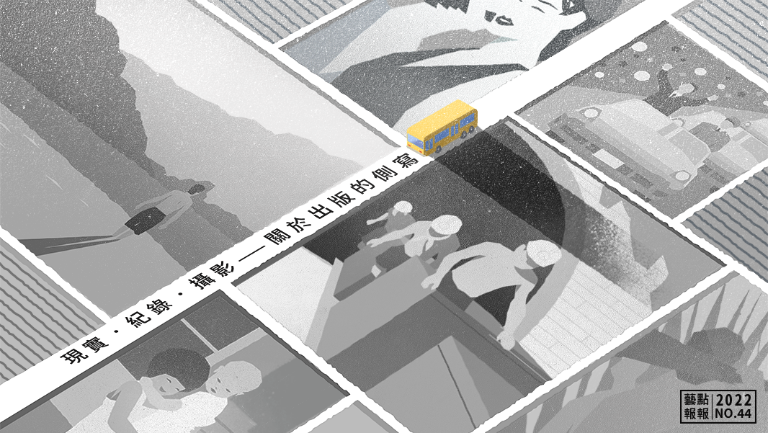As the house light dims and curtain rises, have you ever noticed in the dark auditorium that someone next to you sneak out a pen and pieces of paper to take fast notes at any given moment which allows a brief distraction from the stage? Or it could be the zealous gaze in the darkness, which is beyond pure appreciation, to absorb the transient scenes in front of the eyes. Although what happens in theatre stays in the theatre, one still keeps the experience safe and sound in the mind and wait until later to reexamine its essence.
They are critics, the dream stealers in theatre. In their race against time, they closely follow the work with an ambitious attempt, if not impossible at all, to pursue the objective significance of the subjective perception. From the perspective of artmaking, critics’ insight is always the hindsight, but they are the pioneers in history swinging between the artwork and its wider cultural context for that criticism is a mixture of sense and sensibility. Even though the making of a critic and their professional function in the industry is still under debate, no one can deny the fact that critics are indispensable in theatre, since “a performance receives no criticism will eventually disappear,” says Chan Hui-ling.1
Supporting independent critics with the greatest resources in Taiwan, the NCAF Grant for Performing Arts Critics encourages critics to voice their observation and publish their critiques on the official website of “Reviewing Performing Arts Taiwan.” Since the grant program initiated in 2014, it has nurtured a long list of professional critics. Its first years saw a majority of theatre critics, with a few with a specialization on either dance or traditional theatre.2 Both Lin Nai-Wen (2014) and Yeh Ken-Chuan (2014) wrote about theatre and dance as they particularly focused on the development and history of theatre in Taiwan. Lin often gave a vivid description to contextualize adaptations, body, and space in her critiques, while Yeh adopted a clear and well-structured analytical perspective as a conscious dialogue with creators. As a producer and programmer dedicated to the little theatre movement in Taiwan, Wu Sifong (2014) showed concern for the little theatre, people’s theatre and social issues in his critical writing, revealing criticism as an approach of self-reflection. Huang Pei-Wei (2014) anchored her critiques and writing to the art industry and its publicness, while she later became an active member of IATC Taiwan to focus on the critical practice of public governance. Coming from a dramaturgical background, Wu Cheng-han (2014, 2015, and 2016) turned his attention to the contemporary adaptation, translation, or rewriting of classical works and interdisciplinary creations.
Traditional theatre critic Wu Yue-Lin (2014, 2015, and 2016) reveals in his project closure report that his initial purpose of review-writing came from his master’s thesis on Contemporary Legend Theatre, and it gradually extended to the contemporary practices of traditional theatre, with modern-theatre concepts as a comparison in terms of border-crossing.3 Wu’s critiques bridged the legacy of classical Chinese literature studies and contemporary practices of traditional theatre performances, through which he pointed up the problematiques in the making. Later, the border-crossing attempts of traditional theatre had become the main concern of many critics of a background in traditional theatre, including Lin Li-hsiung (2016 and 2017), Lin Hui-Chen (2019 and 2020), Su Heng-I (2021), etc., who had different styles and emphases but followed the same thread. Among them, the Tainan-based Lin Hui-Chen showed a diverse coverage to include a large number of traditional theatre productions taking place in central and southern Taiwan.
With a musical as well as a theatrical training, Siraya Pai4 (2014, 2015 and 2016) based her project on musical theatre in its broadest definition, while her writing of an honest and explanative nature not only touched upon the use of music in theatre but also covered modernized traditional theatre and interdisciplinary works. As a freelance translator, she also wrote about related topics such as “Surtitles in Theatre – An awkward but Necessary Eye-catcher?” Tsai Meng-Kai (2019) was another critic focusing on border-crossing performances between music and theatre, while he took a departure from traditional music and adopted a bright and smooth writing style to illustrate the creative approaches and cultural context of the theatricalization of traditional music.
Fan Xiang-Jun (2014, 2015 and 2016) states in her project closure report about the lack of dance criticism in Taiwan, and her 2015 project thus attempted to establish a critical narrative on the bodily practice of Taiwanese dance via a series of “finding-the-body” critiques. Other dance critics include Wu Meng-Hsuan (2015) who analyzed contemporary choreographic works as social practices, Cheng Yi-Fang (2019) who tried to place the discussed dance pieces within the dance history and a wider cultural context, and Chien Lin-Yi (2021) who showed concern for the continuity of the dance history with revolutions between generations as its entry point. Chang I-wen (2016 and 2017)’s project centered on the experimental dance performances taking place in contemporary art venues with an attempt to offer a dance criticism based on interdisciplinary art theories; as for Lo Chien (2018 and 2019) of a background in contemporary visual-art theory studies, she anchored her observations on the spectatorial relationship to discuss the interrelation between dance/theatre performances and the use of video and space. Carrying out her project with an impressive dedication and effort, Lo published 25 critiques within one project year between 2018 and 2019, which topped all grant-program critics in number. Hsieh Chwen-Ching (2019) also adopted contemporary art theories and aesthetic perspective to reexamine dance and theatre works, while she was quick to adapt during the pandemic by writing about online performances such as “A Relationship of Delivery – on Surprise! Delivery” and “A Full Recycle – the Online Museum Trash Time.”
The performance’s relation to its space was a much-discussed topic in many theatre critics’ projects, including Chen Yuan-Tang (2015 and 2016) who observed how the “character” of the venue, mostly theatres in central and southern Taiwan, affected the creative works, or Liu Chun-Liang (2016 and 2017) and Yang Li-Jung (2017) with a focus on non-conventional performance spaces to examine how the creative and production process responded to the venue. Meanwhile, Yang Zhi-Xiang (2020) and Yang Mei-ying (2019) turned their attention to creation-in-residence and theatre/art festivals taking place outside Taipei, the capital of Taiwan.
The beginning years of grant program saw a lack of music critics in comparison to dance, theatre, or traditional theatre, until 2017 when Liu Ma-Li (2017 and 2021), Yen Tsai-Teng (2019, 2020, and 2021), and Hsu Yun-Feng (2021) joined with their concentration on classical music. Among them, Yen tried to establish a new and different critical approach to music reviews by integrating a perspective of his background in philosophical theories. Other music critics such as Feng Hsiang-Yu (2017), Liu Shi-Ta (2018) and Lin Che-Yu (2020) also explored the diversity beyond the conventional classical music criticism.
There were critics targeting specific topics and particular kind of works. Hsieh Hung-Wen (2015 and 2016) showed concern for children’s theatre and aesthetic education. Huang Shin-Yi (2017 and 2018) and Jian Wei-Chiau based their critical writing on the left-wing narrative to follow and touch upon the development of the political situations, community theatre and applied theatre in Taiwan. Lin Yu-Shih (2014) and Lu Hong-Wun (2017) centered their projects on Taiwan’s indigenous dance and theatre, while Hsi Ching-Yi (2020 and 2021) broadened her focus on the indigenous song-and-dance performances taking place in Eastern Taiwan (Hualien and Taitung) to include art festivals, music festivals, performance art and gender issues. Meanwhile, we also see critics exploring and experimenting different approaches of criticism: Chang Tun-Chih (2017 and 2018) in his project “WTPN (Why This Play Now)” adopted the practice of dramaturgy to discuss the performance and text; Chen Tai-Yueh (2016) explored a participatory criticism approach; Tu Hsiu-Chuan (2018) in her “The Trauma Carrier: On the Intersubjectivity between Performance and Audience” centered on trauma to reverse the subject-object relationship between performance and critique; Zhang You-sheng (2020) proposed “Learning to Write: Starting from the Basic Principle of Criticism” to reveal a desired return to the essence.
NOTES
[1] See the transcription of the second talk at the 2019 Inharmonious Talk Series “A Look back on History and the Presence of Critics”(https://pareviews.ncafroc.org.tw/comments/32ec734a-52f3-4179-b533-4146e7c675c6)
[2] The number of music critics has increased since 2017, and it is not limited to classical music but also includes jazz or pop music.
[3] See Wu Yue-ling, Project Closure Report “The NCAF Grant for Performing Arts Critics -- Border.CrossingⅢ: The Infinite Borders/Limitations and Finite Crossing/Revieing,” the NCAF Online Grant Portfolio Archive (https://archive.ncafroc.org.tw/result?id=2c96c00fa99d42e6a069ef09f0544016)
*Translator: Siraya Pai

1066X602_1672718844490.png)

